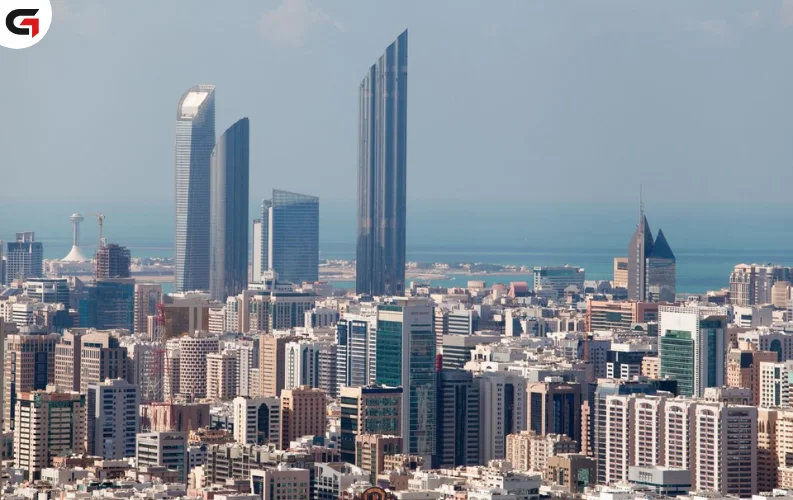Commercial real estate (CRE) plays a foundational role in how societies function, economies grow, and businesses thrive. Unlike residential properties that serve private living purposes, commercial properties are developed, leased, and managed for business use, revenue generation, or professional services. From office buildings and shopping malls to warehouses and mixed-use developments, commercial real estate covers a broad spectrum of property types.
Understanding commercial real estate is essential for investors, developers, real estate professionals, and policymakers alike. Each asset class under this category comes with its own features, revenue models, risk factors, and legal considerations. This article delves deep into what defines commercial real estate, outlines its primary categories, and explores the opportunities and challenges that come with it.
Defining Commercial Real Estate
At its core, commercial real estate includes any property that is used for business purposes rather than residential occupancy by a family or individual. These properties can be owned by individuals, corporations, or institutional investors, and are typically rented out to tenants to generate income. CRE can range in scale from small storefronts to sprawling industrial parks and international hotel chains.
The importance of commercial properties extends beyond economics—they form the infrastructure of our cities, shape our daily experiences, and facilitate the entire ecosystem of commerce. Whether it's a coworking space downtown, a medical office in the suburbs, or a data center on the outskirts of a city, CRE surrounds and supports modern life.
Main Types of Commercial Real Estate Properties
Commercial real estate is broadly classified into several categories based on the property’s intended use. These categories are crucial for developers and investors who base their decisions on the income potential, market demand, and legal framework associated with each type.
1. Office Buildings
Office spaces are among the most recognizable forms of commercial real estate. They are developed to house business operations, ranging from small local firms to multinational corporate headquarters. These properties are usually categorized into:
-
Class A Offices: High-end, modern buildings located in central business districts.
-
Class B Offices: Slightly older buildings offering functional but less luxurious spaces.
-
Class C Offices: Older or lower-quality buildings, typically located in suburban or less desirable locations.
Office buildings may also include specialized spaces such as medical offices, often customized for clinics, dental practices, or outpatient centers.
2. Retail Properties
Retail properties serve the consumer-facing side of the economy and can range from standalone stores to large-scale shopping centers. They are developed to provide goods and services directly to customers and come in various formats, including:
-
Strip malls
-
Community shopping centers
-
Big-box retail and power centers
-
Enclosed regional malls
-
Single-tenant retail buildings (e.g., Starbucks, banks)
These properties often benefit from high foot traffic and are strategically located near residential areas or highways for maximum visibility.
3. Industrial Properties
Industrial real estate refers to buildings used for manufacturing, production, logistics, storage, and distribution. With the rise of e-commerce, this category has seen explosive growth in recent years.
There are three primary types of industrial properties:
-
Warehouses – Primarily used for storage and distribution.
-
Manufacturing Facilities – Custom-built for industrial processes and machinery.
-
Flex Spaces – A blend of office and industrial use, ideal for businesses needing both front-end and backend operations under one roof.
These properties are typically located on the outskirts of urban centers or near major transportation routes to facilitate logistics.
4. Multifamily Properties (Commercial Classification)
While residential in use, multifamily buildings with five or more units are legally and financially classified under commercial real estate. These properties serve as long-term rental income generators and can include:
-
Mid-rise and high-rise apartment complexes
-
Affordable housing developments
-
Senior living communities
-
Student housing facilities
Investors favor multifamily CRE for its steady cash flow, resilience during economic downturns, and consistent demand in urbanized areas.
5. Hospitality Properties
Hospitality properties generate income through the short-term lodging and travel industries. This class includes:
-
Hotels and resorts
-
Motels and extended-stay facilities
-
Boutique and luxury accommodations
Unlike long-term leases in office or retail CRE, hospitality revenues are based on daily occupancy and room rates, making them more dynamic but also more sensitive to economic shifts and tourism trends.
6. Mixed-Use Developments
Mixed-use properties combine multiple CRE categories within a single development. A typical example is a city block that houses:
-
Retail stores on the ground floor
-
Office spaces in the middle levels
-
Apartments or condos on the top floors
These projects are designed to promote convenience, reduce commute times, and foster walkable communities. They are increasingly popular in urban planning and are often supported by local governments due to their efficient use of land.
7. Special-Purpose Properties
Certain commercial real estate properties are custom-built for a specific, limited function and are not easily repurposed. These include:
-
Movie theaters
-
Gas stations
-
Car washes
-
Amusement parks
-
Schools and colleges
-
Churches and religious institutions
-
Self-storage facilities
-
Sports stadiums
Due to their specialized design, these properties often involve unique financing, valuation, and management considerations.
8. Commercial Land
Commercially zoned land refers to undeveloped property intended for future business development. These parcels fall under several categories:
-
Greenfield Land – Unused land suitable for new development.
-
Brownfield Land – Previously developed land requiring environmental remediation.
-
Infill Sites – Vacant land within already developed urban areas.
Investors often purchase commercial land for long-term development projects or resale after land appreciation.
Key Income Sources in Commercial Real Estate
Commercial real estate can be a lucrative asset class, largely due to its income-generating potential. Here are the primary ways CRE produces revenue:
-
Rental Income – Monthly or annual lease payments from tenants.
-
Capital Appreciation – Increase in property value over time.
-
Ancillary Income – Earnings from additional services such as parking, vending machines, rooftop leases, and events.
Some properties—like hotels or malls—can also generate revenue through brand partnerships, advertising, and retail sales participation.
Common Lease Structures in CRE
Understanding leasing agreements is essential in the commercial property space. Common lease structures include:
-
Triple Net Lease (NNN) – Tenant pays rent, taxes, insurance, and maintenance.
-
Gross Lease – Landlord covers all property-related expenses.
-
Modified Gross Lease – A cost-sharing model between tenant and landlord.
-
Percentage Lease – Tenants pay base rent plus a share of their sales revenue (common in retail).
The lease structure directly impacts the profitability and management obligations of the property owner.
Advantages of Investing in Commercial Real Estate
Investors are drawn to commercial real estate for several compelling reasons:
-
Higher rental income compared to residential properties
-
Long-term lease agreements with creditworthy tenants
-
Portfolio diversification and inflation hedging
-
Value appreciation through property upgrades or market growth
-
Tax advantages like depreciation and 1031 exchanges
Challenges in Managing Commercial Real Estate
Despite its benefits, commercial real estate also involves significant challenges:
-
High initial investment and ongoing maintenance costs
-
Complex zoning and building regulations
-
Vacancy risks and tenant turnover
-
Economic sensitivity, especially in sectors like retail and hospitality
-
Need for professional management and legal oversight
Conclusion
So, what are the commercial real estate properties? They are the backbone of our economic and urban life—structures where we work, shop, store, manufacture, rest, and entertain. From sleek office towers to sprawling retail centers, from industrial parks to apartment complexes, commercial real estate encompasses a vast and diverse range of property types, each designed to serve different commercial needs.
Understanding the various CRE property types allows investors and professionals to make informed decisions about acquisition, development, and management. As urbanization, technology, and consumer behavior evolve, so too does the landscape of commercial real estate—offering both enduring opportunities and new challenges for the next generation of stakeholders.
You may also like:-




















